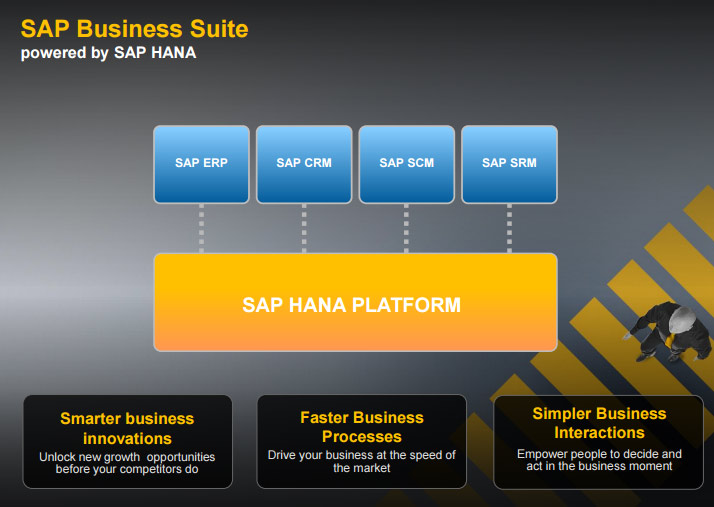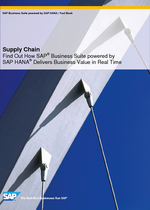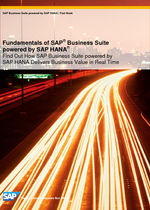
SAP Business Suite on HANA – The soft conversion
Companies looking to eventually move to S/4HANA Enterprise Management can gather initial experience with the new SAP HANA platform and begin taking advantage of its immediate benefits. The idea is for companies that have already converted to SAP Business Suite on HANA to be fully prepared for SAP S/4HANA when the time comes. What’s important is that in procedural terms, nothing changes with SAP ERP (ECC 6.0) or other SAP Business Suite solutions (e.g., SAP CRM, SAP SCM, or SAP SRM). Converting to SAP Business Suite on HANA simply means a technical migration to the SAP HANA database. Experience has shown that SoH offers significantly improved performance. For instance, reports can be executed much faster and real time data can be provided for business applications. Additionally, making the switch to SAP HANA makes it possible to begin using SAP Fiori applications, even with the “old” SAP Business Suite.
Take advantage of the functional benefits of the SAP Business Suite on HANA
- Our newly developed material requirements planning function (“MRP Live”) has been optimised for HANA and offers all of the business management benefits along with drastic performance increases in the corresponding S/4HANA implementation.
- SoH allows you to profit from the benefits of operational real time reporting (“HANA Live”).
- In combination with an SoH, a BW on HANA can take advantage of possibilities for efficient data access (“Smart Data Access”).
- In addition, some reports note that significant performance increases can be observed in businesses using SoH (see SAP Instructions).
Find out how SAP Business Suite delivers business values in real time
32758_GB_28550_6SCM_en.pdf
Supply Chain
29546_GB_28576_SoH_12Fundamentals_en.pdf
Fundamentals of SAP Business Suite powered by SAP HANA
SoH has technological S/4 HANA innovations under its belt
Migration to SAP Business Suite on HANA
- The ECC system must be upgraded to ECC 6.0 EHP 7, as converting to SoH requires a Unicode conversion. These steps are well-suited for outsourcing in preliminary projects.
- Once these steps have been completed, the “real” database migration to SAP HANA begins, enabling you to use SoH.
- Finally, the reports are optimised for SAP HANA, so you can take full advantage of performance increases.
Information workshop
- Overview of SAP HANA technologies
- Typical business cases for specific departments
- Framework conditions and technical requirements
- Overview of migration scenarios
- Effects on organisation and roles
Recommended actions
- Analysis of benefits in the company
- Actual process analysis
- Actual systems analysis
- Recommended actions
Implementation
- Implementation planning
- Technical installation
- Process implementation
- Tests
- User training

